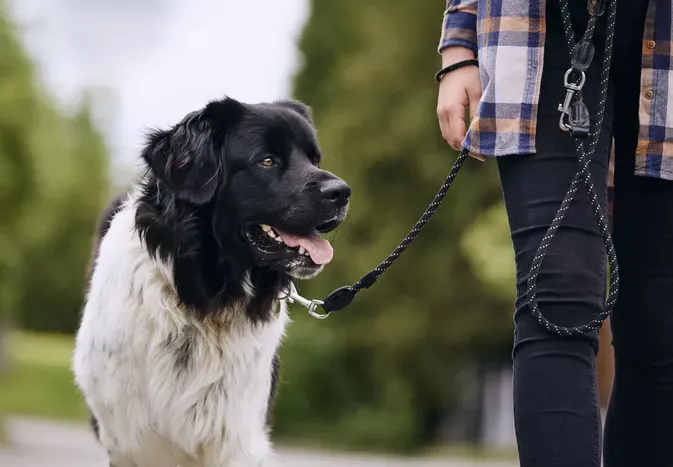Nail Problems in Dogs
Updated on 05/27/24

Nail Problems in Dogs: A Comprehensive Guide to Diagnosis and Treatment
Nail problems are a common issue in dogs, affecting both their physical and emotional well-being. Neglecting these issues can lead to pain, discomfort, and even mobility problems. As a responsible dog owner, it's crucial to understand the various nail problems your furry companion may encounter and how to address them promptly. In this comprehensive guide, we'll delve into the causes, symptoms, and effective treatment options for common nail problems in dogs.
Causes of Nail Problems in Dogs
Nail problems in dogs can stem from various factors, including:
* Genetic Predisposition: Certain breeds, such as Great Danes and Mastiffs, are more prone to nail problems due to their large size and weight.
* Trauma: Injuries to the nails, such as cuts, breaks, or punctures, can lead to infection and other complications.
* Nutritional Deficiencies: A lack of essential vitamins and nutrients can weaken nails, making them more susceptible to breakage and other issues.
* Underlying Medical Conditions: Systemic diseases, such as thyroid disorders or autoimmune conditions, can affect nail growth and health.
* Parasites: Ticks, fleas, and other parasites can transmit infections that can damage nails.
* Environmental Factors: Exposure to harsh chemicals, excessive moisture, or extreme temperatures can weaken nails.
Common Nail Problems in Dogs
Dogs can experience a wide range of nail problems, including:
* Overgrown Nails: Nails that grow too long can curl under, causing pain and discomfort. They can also become infected or break off.
* Ingrown Nails: Nails that grow into the paw pad can cause severe pain and lameness.
* Broken Nails: Broken nails can be painful and may require veterinary attention to prevent infection.
* Paronychia: An infection of the nail bed can cause swelling, redness, pain, and discharge.
* Nail Tumors: While rare, nail tumors can occur in dogs and require prompt veterinary treatment.
* Onychomycosis: A fungal infection that affects the nail can cause discoloration, thickening, and brittleness.
Symptoms of Nail Problems in Dogs
Recognizing the symptoms of nail problems in dogs is crucial for timely diagnosis and treatment. These symptoms may include:
* Licking or Chewing Paws: Dogs may lick or chew their paws excessively due to pain or discomfort caused by nail problems.
* Limping or Reluctance to Bear Weight: Painful nails can make dogs reluctant to walk or bear weight on the affected paw.
* Swelling, Redness, or Discharge Around Nails: These signs can indicate an infection or injury to the nail bed.
* Discolored or Brittle Nails: Abnormal nail color or texture can indicate nutritional deficiencies, infections, or other underlying health issues.
* Deformed Nails: Nails that are curved, twisted, or misshapen can be a sign of genetic disorders or trauma.
Treatment Options for Nail Problems in Dogs
Treatment for nail problems in dogs depends on the underlying cause and severity of the condition. Common treatment options include:
* Trimming Overgrown Nails: Regular nail trimming is essential for preventing overgrowth and its associated problems. Use sharp, dog-specific nail clippers and trim at a slight angle to avoid cutting into the quick.
* Removing Ingrown Nails: Ingrown nails typically require surgical removal by a veterinarian to prevent further pain and infection.
* Treating Broken Nails: Broken nails may require veterinary attention to clean the wound and prevent infection. In some cases, the nail may need to be splinted or removed.
* Treating Paronychia: Antibiotic therapy is typically prescribed to treat bacterial infections of the nail bed.
* Removing Nail Tumors: Nail tumors require surgical removal to prevent their spread. Chemotherapy or radiation therapy may also be recommended.
* Treating Onychomycosis: Antifungal medications are used to treat fungal infections of the nail. Treatment can be prolonged and may require multiple courses of medication.
Tips for Preventing Nail Problems in Dogs
Preventing nail problems in dogs is crucial for maintaining their overall health and well-being. Here are some helpful tips:
* Regular Nail Maintenance: Trim your dog's nails regularly to prevent overgrowth.
* Exercise and Proper Diet: Provide your dog with regular exercise and a balanced diet to promote strong, healthy nails.
* Avoid Chemicals and Extreme Temperatures: Protect your dog's nails from harsh chemicals and extreme temperatures.
* Check for Parasites: Regularly check your dog for ticks, fleas, and other parasites that can transmit nail infections.
* Monitor for Symptoms: Observe your dog for any signs of nail problems and seek veterinary attention promptly.
By following these tips, you can help prevent nail problems in your dog and ensure their continued health and happiness. Remember, nail problems can range from minor nuisances to serious health concerns, so it's important to address them promptly to avoid potential complications.
Explore More Pets

Basic Training
Puppy and Baby Introductions

Working Dog Breeds
All About Search and Rescue Dogs

Dog Treatments
Puppy Vaginitis: Signs, Causes and Treatment

Dog Adoption
After More Than 1,200 Days in the Shelter, Coco Goes Home

Basic Training
How to Train Your Puppy to Go on Potty Pads

Hybrid Dog Breeds
The Difference Between a Mutt, Mixed Breed, or Designer Dog?

Puppies
7 Reasons Why Two Dogs Are Better Than One

Basic Training
8 Things to Teach Your New Rescue Dog Right Away
